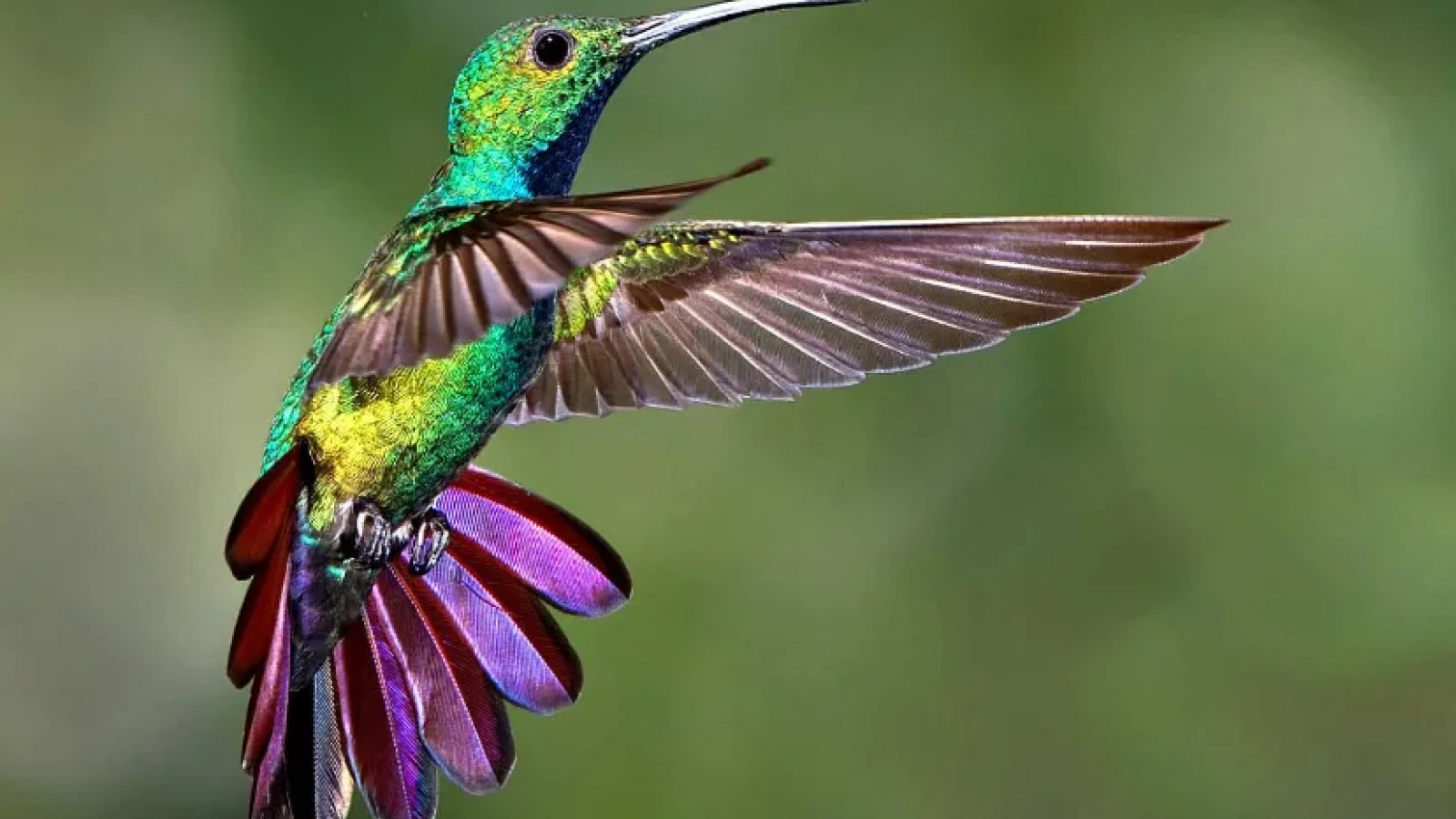2 Minutes
Among the vast diversity of avian species, hummingbirds stand out as the sole group capable of sustained backward flight. This remarkable ability is attributed to their unique wing structure and flight mechanics, setting them apart from other birds.
Unique Wing Structure and Flight Mechanics
Hummingbirds possess a specialized ball-and-socket joint at the shoulder, allowing their wings to rotate in a full 180-degree arc. This flexibility enables them to move their wings in a figure-eight pattern, generating lift on both the upstroke and downstroke. Consequently, they can hover in place, fly forwards, backwards, and even upside down.
Their rapid wing-flapping rates, reaching up to 80 beats per second, produce the characteristic humming sound from which they derive their name. This rapid movement, combined with their unique wing structure, facilitates their exceptional maneuverability.
Adaptations for Feeding and Navigation
The ability to fly backwards is particularly advantageous for hummingbirds when feeding on nectar. It allows them to efficiently navigate between flowers, retreating from one bloom and approaching another with precision. This skill is essential for accessing food sources in dense foliage or tight spaces.
Additionally, their agility aids in evading predators and maneuvering through complex environments, further enhancing their survival capabilities.
Comparison with Other Birds
While some birds, such as warblers, egrets, and herons, can flutter backwards briefly as a defensive maneuver, they lack the ability to sustain backward flight. This limitation is due to the structure of their wings and the mechanics of their flight muscles, which are primarily adapted for forward motion.
In contrast, hummingbirds' unique anatomical adaptations grant them unparalleled control over their flight, distinguishing them as the only birds capable of sustained backward flight.
Conclusion
Hummingbirds' ability to fly backwards is a testament to their extraordinary evolutionary adaptations. Their specialized wing structure and flight mechanics not only enable this unique capability but also contribute to their agility and efficiency in feeding and navigation. This remarkable trait underscores the diversity and complexity of avian flight behaviors.


Comments